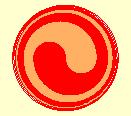
Last Modified
Edited by Janusz R. Prajs
Technical editor Włodzimierz J. Charatonik
Janusz R. Prajs
Department of Mathematics and Statistics
California State University, Sacramento
6000 J Street
Sacramento, CA 95819-6051
prajs@csus.edu
(916) 278-7118
or
Włodzimierz J. Charatonik
Department of Mathematics and Statistics
Missouri University of Science and Technology
Rolla, MO 65401
wjcharat@mst.edu
(573) 341-4909
Here we present problems from the past edition of our list that have been solved. However, we cannot guarantee that all the announced results are correct; the authors are ultimately responsible for the correctness of their solutions.
1 .
If X is a Kelley continuum, is the hyperspace C(X) of nonempty subcontinua of X also a Kelley continuum?
(S. B. Nadler, Jr, 1978)
NO
Wlodzimierz J. Charatonik with Janusz J. Charatonik, March 2004.
Janusz J. Charatonik and Włodzimierz J. Charatonik, Property of Kelley for the Cartesian products and hyperspaces, Proc. Amer. Math. Soc. 136 (2008), no. 1, 341-346.
2.
Let H be the space of all autohomeomorphisms of the Menger curve M1,3 (of the Menger space Mn,k, for 0 < n < k). Is H homeomorphic to the complete Erdös space E ?
We assume the regular sup metric in the spaceH. The complete Erdös space E is defined as the collection of all sequences of irrational numbers xn such that the series Σxn2 converges, equipped with the metric d({xn},{yn}) = (Σ(xn-yn)2)1/2.
Observe that the complete Erdös space is the subspace of sequences of irrational numbers in the Hilbert space l2.
Oversteegen and Tymchatyn conjectured that the answer is YES (Conjecture 7.8 in J. C. Mayer and L. G. Oversteegen., Continuum theory, Recent Progress in General Topology North-Holland, Amsterdam, 1992), pp. 453–492.). This question is closely related to the next problem on the list.
NO
Jan J. Dijkstra, J. van Mill, and J. Steprãns, Complete Erdös space is unstable, Math. Proc. Cambridge Philos. Soc. 137 (2004), 465-473, Corollary 4.2, p. 469.
3 .
Let X be an almost 0-dimensional, 1-dimensional, topologically complete, pulverized, homogeneous space. Is X homeomorphic to the complete Erdös space?
Let uoc(X) be the collection of all unions of open-closed subsets of X. If the collection of all open sets U in X such that X – cl(U) belongs to uoc(X) is a basis of the topology on X, then we say that X is almost 0-dimensional. We call X a pulverized space if it is homeomorphic to a space Y – {p}, where p is a point in a connected metric space Y.
This problem is related to the previous one. The question was originally asked by Kazuhiro Kawamura, Lex G. Oversteegen and Edward D. Tymchatyn in On homogeneous totally disconnected 1-dimensional spaces, Fund. Math. 150 (1996), 97-112. Among spaces that have the same properties as the space X in the problem are: the complete Erdös space, the space of autohomeomorphisms H of any Menger continuum Mn,k (k>0), the set of end points of the Lelek fan, the set of end points of the universal R-tree, the set of end points of the Julia set of the exponential map (see the paper by Kawamura, Oversteegen and Tymchatyn mentioned above, and also: L.G. Oversteegen and E.D. Tymchatyn, On the dimension of certain totally disconnected spaces, Proc. Amer. Math. Soc. 122 (1994), 885–891). Among totally disconnected 1-dimensional spaces, the complete Erdös space seems to play a role similar to the role of irrationals among 0-dimensional spaces.
NO
Jan J. Dijkstra, J. van Mill, and J. Steprãns, Complete Erdös space is unstable, Math. Proc. Cambridge Philos. Soc. 137 (2004), 465-473, Corollary 3.2, p. 467.
4 .
Does there exist a continuum X that does not admit a continuous surjection onto its hyperspace C(X) of nonempty subcontinua?
Originally, questions about the existence of such mappings appeared in the book by S. B. Nadler, Jr., Hyperspaces of sets, M. Dekker, New York and Basel, 1978.
YES
Alejandro Illanes, August 31, 2004
Alejandro Illanes , A continuum whose hyperspace of subcontinua is not its continuous image, Proc. Amer. Math. Soc. 135 (2007), no. 12, 4019-4022
5.
Let X be a dendrite and C be a collection of closed, nonempty, mutually disjoint subsets of X. Assuming the Hausdorff metric on C, does C admit a continuous selection s: C → X ?
This question was posed by Lew Ward during the 8-th Chico Topological Conference, May 30-June 1, 2002. Originally, the property in question was studied by Ernest Michael (Topologies on spaces of subsets, Trans. Amer. Math. Soc. 71, (1951). 152–182) as what he called property S4. He observed that an S4 space cannot contain a simple closed curve and that any tree is S4. There was no further progress on this problem until 1999 when Sam B. Nadler and Francis Jordan proved (A result about a selection problem of Michael, Proc. Amer. Math. Soc. 129 (2001), 1219–1228) that an S4 continuum is hereditarily decomposable. Finally, Jordan proved (preprint) that an S4 continuum is a dendrite. Thus in the above question L. Ward asks whether the converse implication to Jordan’s result is true.
YES
Francis Jordan, July 22, 2004.
Francis Jordan, The S4 continua in the sense of Michael are precisely the dendrites, Houston J. Math. 32 (2006), no. 2, 471—487.
6 .
Is there an uncountable family of dendroids each two members of which are incomparable by continuous functions?
A dendroid is an arcwise connected and hereditarily unicoherent metric continuum.
(B. Knaster 1961)
YES
Announced by Piotr Minc, February, 2006.